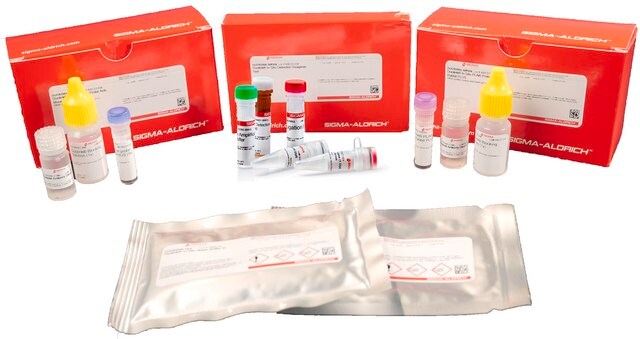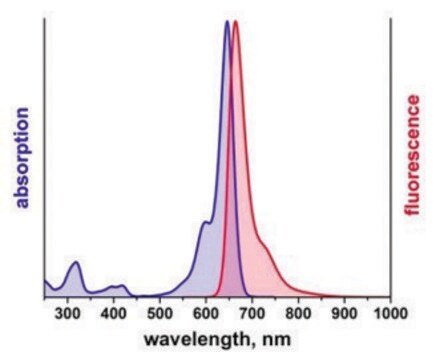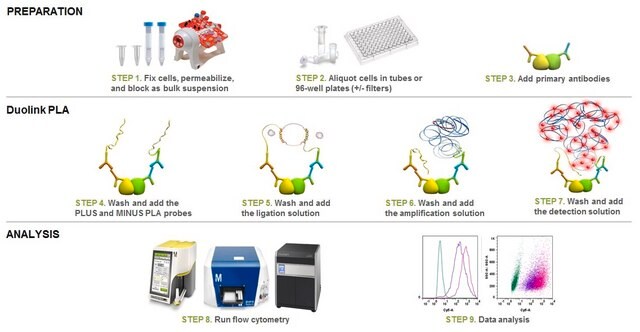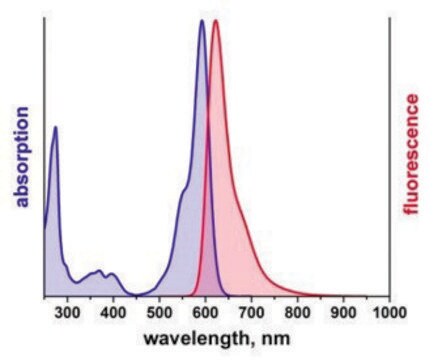DUO92202
Duolink® PLA Control Kit - PPI
Control Kit to reliably detect Protein-Protein Interactions (PPI) with Duolink® PLA
Synonym(s):
in situ Proximity Ligation Assay Control Kit, Protein Protein Interaction Assay Control Kit
About This Item
Recommended Products
product line
Duolink®
technique(s)
immunofluorescence: suitable
proximity ligation assay: suitable
suitability
suitable for fluorescence
shipped in
dry ice
storage temp.
−20°C
General description
Application
In the Duolink® PLA Control Kit, the cells and antibodies are provided, and the conditions have been optimized. When combined with the necessary Duolink® PLA reagents, you will have all you need to successfully perform the PLA experiment and obtain positive results.
The Control kit contains Duolink® PLA Control Slides (Cat. No. DUO82202) - two 8 well glass slides with fixed SK-OV3 Human ovarian cancer cells. The cells were treated with EGF, to induce EGFR and HER2 interaction. The Kit also contains one vial of Anti-HER2 antibody produced in rabbit (HPA001383), and one vial of Monoclonal Anti-EGFR antibody produced in mouse (E3138) – the two primary antibodies you need to detect the two interacting protein
Let us do the work for you, learn more about our Custom Service Program to accelerate your Duolink® projects
View full Duolink® product list
Duolink® PLA Control Kit - PPI is designed to allows users to gain confidence with the Duolink® PLA technology. This Kit contains glass slides with fixed, treated cells and a specific pair of primary antibodies that will detect interacting proteins and reliably generate PLA signals when used with the complementary Duolink® PLA probes and detection reagents. Analysis is carried out using standard immunofluorescence assay equipment.
Specificity
This kit will enable the detection of Protein-Protein interactions. The SK-OV-3 cells contain HER2 and EGFR, which show increased interaction upon treatment with EGF. When combined with appropriate Duolink® PLA Reagents, the Control Kit will enable the successful detection of increased HER2 and EGFR protein interactions in the EGF treated cells.
Features and Benefits
- Reliable PLA signal detecting a protein interaction
- Gain confidence with the Duolink® PLA Technology
- Add additional controls to your PLA experiments
- Increased sensitivity due to rolling circle amplification for low abundant targets
- No overexpression or genetic manipulation required
- Relative quantification possible
- Works with any fluorescence microscope and appropriate filters
Components
- Duolink® PLA Control Slides (DUO82202) - two 8-well chamber slides with EGF treated, pre-fixed SK-OV3 cells.
- One vial (15μL) of Rabbit anti-ErbB2/HER2 antibody (HPA001383)
- One vial (25μL) of Mouse anti-EGFR antibody (E3138)
See datasheet for more information.
Other Notes
Mouse/Rabbit Duolink® PLA Starter Kit: Red Starter Kit (DUO92101) OR Orange Starter Kit (DUO92102)
OR
PLA Probe pairs (PLUS and MINUS): Anti-Mouse PLUS (DUO92001) and Anti-Rabbit MINUS (DUO92005) or Anti-Mouse MINUS (DUO92004) and Anti-Rabbit PLUS (DUO92002); AND Detection reagents of choice: Orange (DUO92007), Red (DUO92008), FarRed (DUO92013), or Green (DUO92014); AND Wash Buffers (DUO82049) AND Mounting Medium with DAPI (DUO82040).
Legal Information
Disclaimer
related product
Storage Class Code
11 - Combustible Solids
Choose from one of the most recent versions:
Already Own This Product?
Find documentation for the products that you have recently purchased in the Document Library.
Customers Also Viewed
Articles
Learn how Proximity Ligation Assay technology works and how the protein-protein interaction control kit can confirm in situ detection of EGF-induced EGFR-HER2 dimerization.
Find Duolink references based on the type of method used, post translational modification detected, and research focus.
Protocols
This protocol describes the use of Duolink® PLA reagents for the brightfield detection, visualization, and quantification of individual proteins, protein modifications, and protein interactions in tissue and cell samples.
Related Content
Protein and nucleic acid interaction reagents and resources for investing protein-RNA, protein-DNA, and protein-protein interactions and associated applications.
Our team of scientists has experience in all areas of research including Life Science, Material Science, Chemical Synthesis, Chromatography, Analytical and many others.
Contact Technical Service








